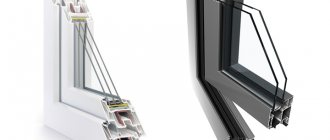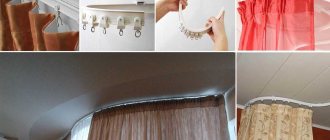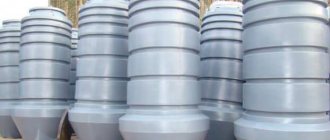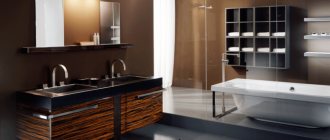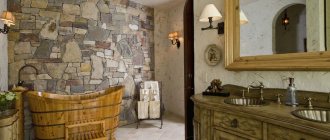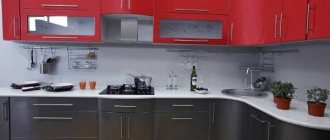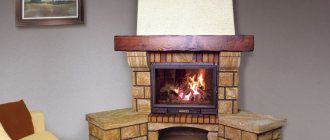Sometimes it happens that it is impossible to install conventional air ducts made of metal in a room (for example, in a bathroom). Then the person has to look for alternative ways to solve the problem. And then exactly the same system, but made of durable plastic material, comes to his aid.
Thanks to new technologies that are used in plastic analogues, more and more people are leaning toward this option. After all, for example, such an air duct is not subject to corrosion processes and is a more environmentally friendly product.
Benefit
Air ducts made of plastic material are very unpretentious during installation (therefore, even a person who does not have any special construction skills can install them). In addition, they can be given any shape, which allows them to be installed even in the most difficult to reach places.
Also, this version of the air hood is quite light in weight, and this is a very big help. Well, as a cherry on top, the prices for plastic air ducts are extremely attractive; a person with an average income can easily afford them.
Pros and cons of ventilation plastic ↑
The advantages of synthetic material, which are easy to discover during installation and operation, made it possible to abandon the use of metal analogues.
The plastic air duct blends seamlessly into the surrounding environment
Polymer pipes are recommended for use by builders and designers, and the reasons for the positive rating were the following factors:
- A neat appearance that allows you to include ventilation details in the kitchen interior. Straight elements with rounded transitions fit perfectly into the modern style, and if necessary, they can be easily disguised with a false cabinet or hanging panel.
- Characteristics that influence service life are strength and wear resistance. PVC structures last up to 50 years and require replacement only if it is necessary to refresh the interior. Fungus does not take root on an artificial surface, and plastic, unlike metal, does not corrode.
- Possibility of self-installation. Modern manufacturers produce systems that are very easy to install: plastic rectangular air ducts of the required sizes are inserted into one another, and the turning points are decorated with streamlined adapters.
- Low cost, which is a decisive factor for budget-conscious owners. Flat rectangular channels cost from 60 rubles/m, and fittings – 50-130 rubles/piece.
The light weight of the elements allows for quick and easy transportation and installation work; polypropylene or polyethylene is much easier to process than galvanizing.
The area above the cabinets is one of the most suitable for installation
The only, but very important, disadvantage that must be taken into account when installing ventilation systems in residential premises is low resistance to heating. High temperatures cause deformation of products, and when ignited, polymers melt, smoke and emit caustic, life-threatening gas.
Types of plastic air ducts
The production of air ducts is developing steadily every year. More and more products are being produced that both technically and aesthetically attract our attention.
Since people may have different rooms, there are also different types of air ducts produced. Today you can find such types of plastic air ducts as:
- classic version - rectangular;
- air duct made in a round style;
- flexible (made to order if a person has a rather complex installation).
Each type has its own advantages and disadvantages. And sometimes it happens that a banal replacement of one type with another leads to improved circulation of air masses.
How to hide a kitchen hood duct: decorating methods
An air duct running from the hood to the ventilation hole is unlikely to look beautiful in the interior (especially if it is corrugated). Therefore, they often decide to hide it.
Ways to do this are:
- Plasterboard sheathing . In this case, a sheathing is installed around the air duct, onto which plasterboard is then attached, and then finished like the rest of the room. This option can be beautifully implemented, but it will be difficult to reach the air duct if necessary.
- Plastic box . There are special plastic boxes on sale that are designed specifically for decorating corrugations in the interior. A simpler and cheaper analogue of plasterboard sheathing.
- Installation above a suspended/stretch ceiling . In this case, the air duct rises upward from the hood and is hidden under the ceiling structure. The section running from the hood to the ceiling is either covered or left without decoration. The downside is that this option is only suitable at the stage of renovation of the premises (that is, if you buy a hood after the finishing is completed, this will no longer be possible). And if you need to get to the air duct, you can do this only by disassembling the ceiling.
- Embedding hoods and air ducts into furniture (wall cabinets). In this case, a cabinet is hung on the wall (under the ceiling), and the air duct runs inside it. The downside is that the free space for various kitchen utensils is reduced.
- Hinged “visor” for the cabinet . A budget version of the previous method. The cabinet is not built to the ceiling, the air duct is taken out of it to the top and leads to the ventilation shaft. A canopy protruding upward is installed on the cabinet, which will hide the air duct.
- Air duct installation over kitchen cabinets close to the wall . If the cabinets are tall and deep (protrude far), then the air duct will either not be visible at all, or it will not be so striking.
- Painting . The cheapest and easiest way is to paint the pipe to match the interior so that it does not catch the eye.
Where are fabric air ducts used and why are they good: a review of textile ventilation
What to do if a bird gets into the ventilation?
Related Posts
Material of manufacture
Despite the fact that there is a common name - plastic air duct, in fact, various materials are used in its manufacture, which have completely different technical properties and performance characteristics. By the way, it is this factor that affects the size of plastic air ducts for ventilation.
What materials are used to make such a system? There are actually very few of them, but each of them is unique in its own way.
In the production of air ducts the following are used:
- polyvinyl chloride Has a wide operating temperature range (from -25° to + 60°). PVC material is very well suited for buildings where there is no central heating;
- polypropylene. Its advantage is good resistance to aggressive chemical products (it performs well when exposed to acidic solutions, alkaline mixtures, etc.);
- fluoroplastic The main advantages are a wide temperature range of use and resistance to various acids;
- low-pressure polyethylene. Increased flexibility and resistance to mechanical damage - this is what makes this material option good.
As you can see, the choice is quite good, which is probably why there has recently been a trend towards purchasing systems of this type.
Types, sizes and equipment
In shape, boxes for the manufacture of air ducts are round, rectangular and square. The most popular products are rectangular in shape. They easily fit into any interior and harmonize with any furniture. Today there is a large selection of shapes and sizes of plastic ventilation ducts on sale. This allows them to be used in rooms with different areas and volumes.
Having a standard wall thickness of 3-4 mm, rectangular plastic ventilation ducts have the following parameters:
- section - 110×55 mm, 120×60 and 204×60 mm;
- channel lengths - 50 cm, 100 cm, 150 cm, 200 cm and 250 cm.
The color of the products may be as follows:
- white;
- plain color;
- under the tree.
If none of the color options are suitable, then you can do the following:
Plastic air duct elements
- paint the air duct;
- cover the box with wallpaper or adhesive tape to match the color of the room’s interior;
- make a plasterboard box for the air line with subsequent finishing;
- cover the air duct with sheets of PVC plastic to match the color of the ceiling;
- place the duct structure under a plastic suspended ceiling.
For ease of installation and giving the desired shape to the air duct, manufacturers offer a large selection of additional elements.
So, complete with pipes you can purchase the following parts:
- Wall plates. For connecting an air duct to a ventilation shaft and decoratively hiding the mounting hole.
- Angles for rectangular pipes. Designed to connect them at right angles. There are vertical and horizontal versions.
- Corners for rectangular and round boxes. Used to connect round and flat sections of the highway at right angles.
- Corners for different boxes. Serve as a connection for rectangular parts of different sections.
- Couplings for rectangular boxes. For connecting sections of rectangular highways.
- Couplings for rectangular channels with valve. For joining rectangular plastic parts. They have a check valve to prevent air from entering the ventilation shaft or from the street into the room.
- Universal couplings. Designed for connecting ventilation plastic rectangular ducts measuring 55x110 mm and 60x204 mm at any angle.
- Couplings for rectangular and round fragments. Used to connect rectangular and round boxes.
- Holders. They are used for attaching plastic ventilation boxes with dimensions of 55×110, 60×122 and 60×204 mm to walls or ceilings.
Also read: Plastic cable channel.
Advantages of plastic air ducts
Plastic air ducts have many different advantages. These include:
- absence of corrosion deposits (plastic, in principle, does not rust);
- environmental friendliness of manufacturing materials;
- resistance to water vapor (therefore, installation of such a product is highly recommended in rooms with a humid environment);
- resistance to chemically active substances;
- long service life;
- high strength characteristics;
- original appearance;
- low level of friction, which in turn reduces the entry of dirt into the air duct;
- good tightness;
- small dimensions;
- light weight (which facilitates installation of the structure).
As you can see, this product is a good choice. But still, before making the final decision to install it, it is recommended to collect all available information. This is not so difficult, given the availability of the Internet.
And photos of plastic air ducts (if a visual glance is needed) can be found in large quantities in various sources, so there should not be any problems with this either.
The importance of kitchen ductwork
A kitchen hood is a useful element
Today it is difficult to imagine a modern kitchen that would not have the banal household appliances necessary for cooking: a refrigerator, a stove, a microwave oven... Everyone should have this basic set. Likewise, there should be no doubt about hoods, or, to be more precise, hoods. Thanks to these simple designs, it is possible to get rid of excess moisture or combustion products.
What elements are needed to install a hood
A relic of the Soviet system is that apartments are equipped with a single ventilation duct. In fairness, it should be noted that with the operation of the hood, polluted air is ideally removed from the kitchen.
A similar situation occurs with disruption of the natural air circulation system in the home, which immediately leads to stagnation.
Peculiarities
Plastic air ducts are significantly superior in technical terms to metal analogues, which affects the gradual abandonment of the latter, and entirely:
- Air ducts for kitchen hoods made of plastic are easy to process. At the same time, the smoothness of the surface from the inside is maintained. In a similar situation, metal air ducts become rough, and this is already a disadvantage for their further functioning. With an increase in static resistance, the movement of air in a metal structure reduces the amount of mass at the exit.
- Considering that these are chemical alloys, the plastic type of air ducts contains antiseptic components that reduce dust on the surface. As a result, cleaning is simplified. Why not save on maintenance?
- Plastic can be sanded and cut (compared to metal). Consequently, it is much easier to adjust the plastic version to the required format, while with the metal version you will definitely have to tinker.
How to install a hood correctly
Plastic ventilation ducts are environmentally friendly due to the clean materials from which they are made. This allows us to speak about confidence in their safety and reliability. Therefore, plastic is more hygienic than metal, due to its anti-corrosion and antiseptic surface.
The current technical features can be called basic, since they are original from the moment of creation, and this cannot be changed in any way. The choice will depend solely on the buyer.
How to choose a hood, consider all the pros and cons:
Advantages and disadvantages
Click to enlarge
Plastic island hood structures are quite convenient in terms of formatting. They are sold in round and rectangular shapes. Additionally, L-shaped adapters can be purchased. The sealant will help complete the operation of the entire system.
So, the advantages are:
- Noise insulation;
- The tightness of the fastening so that dirt does not clog into the gaps;
- Low resistance;
- Lightweight, which makes them easier to transport.
Despite this, there are some downsides. In this case, a rather serious drawback is the low level of fire resistance. This affects the choice of room for installation, since in some cases you will have to be careful with fire safety rules.
An island kitchen is not complete without an air duct.
Air ducts made of plastic do not tolerate high temperatures, therefore their operation in rooms prone to fire is unacceptable. Thus, the plastic option is not recommended for industrial enterprises; in order not to risk expensive equipment, or even the lives of employees, it is better, of course, to resort to metal air ducts.
Read here how to correctly calculate the dimensions of kitchen facades.
However, for home use, say in the kitchen, the plastic version is clearly more practical and is in no way inferior in reliability. Therefore, this is a fairly reasonable solution for ventilation in the house.
Installation Tips
If a person has clearly decided on the purchase of this system, then the question “where to buy a plastic air duct” will disappear by itself.
Finally, I would like to give just a few tips that will come in handy during installation:
- when installing, treat the boxes, auxiliary elements, fastenings with a special substance - an antistatic agent;
- when calculating the total estimate, it is recommended to purchase 5-10% more fastening and other materials;
- flexible corrugation must be attached without reserve, otherwise it may undergo a stretching process, which in turn will reduce the technical characteristics of the product.
Advantages and disadvantages of plastic ventilation ducts
Air ducts made of plastic have many advantages:
- excellent flexibility and pliability;
- environmental safety;
- strength achieved due to the shape and thickness of the walls of the air duct;
- resistance to temperature changes;
- immunity to chemical (including organic) substances;
- light weight.
- the ability to adjust to almost any required shape;
- ease of installation and maintenance;
- easy dismantling if necessary;
- a huge variety of colors, shapes and sizes of air ducts, which allows you to choose ducts to suit any interior of the room;
- low cost.
At first glance, it may seem that plastic boxes simply have no disadvantages, but if there are, the advantages will more than cover them. But it is not so.
The main disadvantage of plastic products is their vulnerability to high temperatures. Already when reaching 120 degrees Celsius, the plastic begins to soften.
The box loses its original shape and may be damaged under its own weight. The tightness of the entire system will eventually be compromised.
Moreover, with prolonged heating, the plastic simply begins to melt and flow. When this material burns, gases are formed that are extremely toxic to the human body.
And since all this happens in the ventilation system, in a matter of minutes all rooms in the building will become dangerous to the health and life of the people and animals in them.
